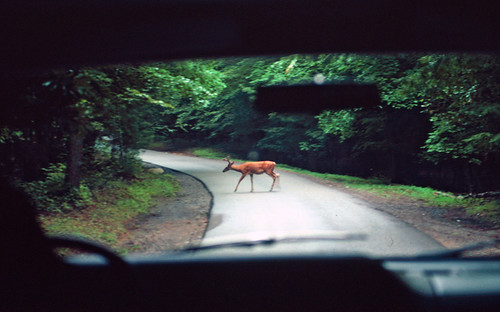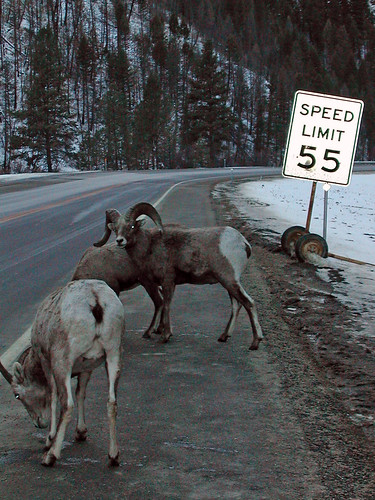
Collisions between vehicles and wildlife are a big problem on U.S. roads. Each year, on average, 1-2 million collisions with large animals, especially mule deer and white-tailed deer, end in 200 fatalities, 26,000 injuries, and costs exceeding $1 billion. About a third of the collisions reported on rural roads are wildlife-related, and two-lane highways with speed limits exceeding 55 miles per hour are particularly problematic.
U.S. Forest Service Pacific Southwest Research Station wildlife biologist Sandra Jacobson, a transportation ecology expert, wants to make roads safer for wildlife and people. She and partners at the agency’s Missoula Technology and Development Center have produced a video, “Avoiding Wildlife-Vehicle Collisions,” to do just that.
Deer see things differently in a highway situation. Instead of tracking movement by following objects with their eyes as people do, a deer’s eyes are stationary. This allows deer to detect movement from predators that may be lurking. So, to a deer, a car heading into its path may only seem like an object that’s increasing in size. Deer also see less detail than humans. And a deer’s keen night vision results from an ability to take in a lot of light, which makes headlights blinding.
“People tend to assume that animals see their world just like we do, but that assumption can be deadly,” Jacobson said. “Knowing that animals won’t perceive what’s happening — and indeed can’t understand what’s happening — will help us drive more safely on rural roads.”
Dawn and dusk are active times for many species of large animals which is, coincidentally, a time when people may be traveling to and from work. Choice deer habitat may overlap with human routes of travel, and certain road features, including adjacent or intersecting waterways, tend to attract deer and other large animals.
In the fall season deer movement peaks with migration to winter ranges. These behaviors provide important clues about where and when large animals are likely to be encountered on the road.
“Knowing these risk factors won’t totally avoid a wildlife-vehicle collision, but it can help inform us as to how we can manage our driving times and situations to reduce the risk as much as we can,” Jacobson said.
Though the video is aimed at training Forest Service employees, the information presented is relevant to anyone who gets behind the wheel. The judges behind the 36th annual Telly Awards recognize this: from among 12,000 entries from all 50 states and five continents, they selected “Avoiding Wildlife-Vehicle Collisions” as one of the bronze award winners for excellence in the nature/wildlife and safety categories.
DVD copies may be requested from the Missoula Technology and Development Center.

